Brewing Community: How Brands Are Connecting Over Coffee (And Matcha Of Course)
In today’s content-saturated world, brands are embracing coffee culture as a tool for deeper connection. From matcha beauty pop-ups to fashion cafés with custom lattes, coffee has become a lifestyle branding medium. Beyond aesthetics and caffeine, it’s about crafting shareable experiences that foster community and a sense of belonging.
June 13, 2025

In the age of always-on content and increasingly selective consumers, brands have found a new thing to connect over: coffee. From matcha-fueled beauty pop-ups to fashion-label cafés with custom latte art, the convergence of coffee culture, social media, and lifestyle branding has created a powerful new channel for community connection and brand storytelling.
But this trend isn’t just about aesthetics or caffeine. It’s about creating moments that people want to share, brewing a sense of belonging.
The Coffee Date as a Cultural and Strategic Ritual
What was once a simple caffeine fix has evolved into a social ritual, particularly among younger, image-conscious consumers. Whether it’s a carefully curated coffee date, a pastel-toned matcha in hand, or an oat milk latte captured mid-pour, these moments are a lifestyle asset shared on socials.
We first saw this surge during the pandemic in 2020. As people sought comfort and routine amid uncertainty, making coffee at home became a form of self-care, creativity, and even self-expression. Viral trends like whipped dalgona coffee turned kitchens into mini cafés, while creators shared ASMR-style morning routines featuring frothy lattes, aesthetic mugs, and perfectly lit countertops.
Regaining control, calm, and creating beauty in a confined world. Coffee became content, and the act of making it became performative – a moment to film, edit, and share. In doing so, it forged a new kind of social connection: one where millions bonded over the shared experience of slowing down and savoring something small.
Brands quickly picked up on this shift, realizing that coffee was no longer just a product, but a storytelling tool.
This enduring ritual provides a rich opportunity to foster meaningful connections, just as it always has. By embedding themselves in these lifestyle moments, they move beyond the transactional and into the emotional.
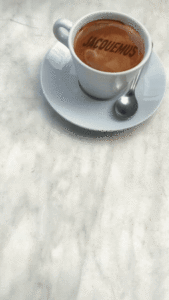
This is what brands like Saie, Aimé Leon Dore, Ralph Lauren, and Jacquemus are tapping into – not just beverage sales, but brand belonging.
- Saie x Rocky’s Matcha brought beauty and wellness together through a visually stunning, culturally rich ingredient – matcha – that’s as photogenic as it is functional.
- Aimé Leon Dore and Ralph Lauren have turned cafés into physical brand worlds where fashion, design, and community intersect daily.
- Jacquemus, known for runway spectacle, has embraced the “everyday luxury” of coffee as a low-cost, high-margin way to invite people into the brand experience – even if they never buy a bag.
Sensory Marketing and the Rise of Everyday Luxury
In a world where everything competes for attention, brands are leaning into sensory marketing – and coffee shops are the perfect venue. The warm scent of espresso, the texture of ceramic mugs, the visual punch of green matcha foam – these physical elements create multi-sensory associations with the brand.
Matcha in particular offers the ultimate content-friendly trifecta:
- Health benefit – antioxidants, calm energy
- Cultural depth – rooted in mindfulness and Japanese tea rituals
- Social virality – vibrant color and ritualistic preparation are perfect for content creation
This ties into a larger consumer trend: people crave experiences that feel premium but fit into their daily lives.
Coffee – especially when elevated by branding, packaging, or creator content – delivers that sweet spot of aspirational yet attainable.
Social Media: Where Coffee Becomes Culture
If café culture is the setting, creators are the narrators. They’re not just posting drinks; they’re capturing a lifestyle. Whether it’s a latte-and-look pairing, a “quiet luxury” moment with a minimalist matcha, or a GRWM (get ready with me) that starts with a branded coffee cup, these micro-moments have enormous cultural weight online.
For creators, coffee is the perfect content prop: it’s visually compelling, relatable, and easily integrated into stories about wellness, style, productivity, or self-care. For brands, that makes coffee not just a product, but a content engine – a small, high-impact object that drives endless organic exposure.
Branded cafés and drinks essentially become media assets. The product isn’t just consumed; it’s filmed, filtered, and shared, creating ripple effects of brand touchpoints across digital platforms.
Creators ‘n Coffee
No conversation about community, coffee, and culture is complete without mentioning Emma Chamberlain, the creator who didn’t just promote coffee culture, she built her brand around it.
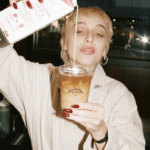
In her YouTube vlogs, Emma’s daily iced coffee routine, only complete with messy bun, hoodie, and oversized straw cup, of course, became a defining part of her identity.
Fans came to associate her with the performative ritual, the craving, and the aesthetic of coffee long before she ever had a product to sell. That sensory habit naturally evolved into Chamberlain Coffee, a brand that felt like an extension of her personal lifestyle.
With brightly designed packaging, and playful, community-driven flavors, the brand carried her voice into a tangible product. From merch to creator partnerships and pop-up cafés designed for both real life and TikTok, every touchpoint was built for shareability.
This brand strategy, building a product around the buzz of a creator’s personality, is nothing new. As creators share every detail of their daily routines online, they tap into a goldmine of community engagement, turning comments and conversations into direct commercial insight.
By listening to what their audiences are already fixated on, they create products that feel like natural extensions of their identity.
The Kardashians, for example, have each launched businesses rooted in the most talked-about aspects of their public personas. From Kim’s sculpting shapewear to Kylie’s lip kits, they effectively transformed viral conversation into brand equity.
Through years of content, Emma trained her audience to associate coffee with productivity, self-expression, and comfort. So when Chamberlain Coffee launched, it didn’t feel like a new venture.
Coffee as a Recession-Era Comfort
There’s also a more subtle, economic layer at play. In uncertain times, consumers may pull back on big-ticket purchases but not on small, comforting luxuries. This is what economists call the “lipstick effect” with small indulgences replacing larger ones, and coffee fits this pattern perfectly.
Even during inflation or economic anxiety, people are still willing to spend $5, even up to $12, on a coffee or matcha. It offers a sense of control, comfort, and even identity – without buyer’s remorse.
Smart brands understand this. A branded coffee concept offers:
- A cost-effective entry point for new consumers,
- A profitable margin model even with giveaways,
- And a community anchor that keeps audiences engaged between larger purchases.
In other words, coffee becomes the bridge between brand and buyer. This creates positive brand experiences fostering long-term brand loyalty.
Coffee as Culture, Community, and Content
The growing alignment of branded cafés, matcha collaborations, and influencer rituals isn’t a passing trend – it’s a strategic evolution in brand-building.
Coffee, matcha and co. offer a rare combination:
☕ Sensory appeal that fuels emotional branding
📱 Visual appeal that drives social virality
🤝 Community feel that fosters loyalty
💸 Low-cost execution that boosts ROI
In a world defined by short attention spans and algorithmic feeds, the humble coffee date has become one of the most powerful tools in a brand’s arsenal – not because it’s flashy, but because it’s familiar, intimate, and shareable.
And as long as creators keep filming their lattes and audiences keep watching, the branded coffee moment will remain the most inviting door into a brand’s universe.
Latest News ☕
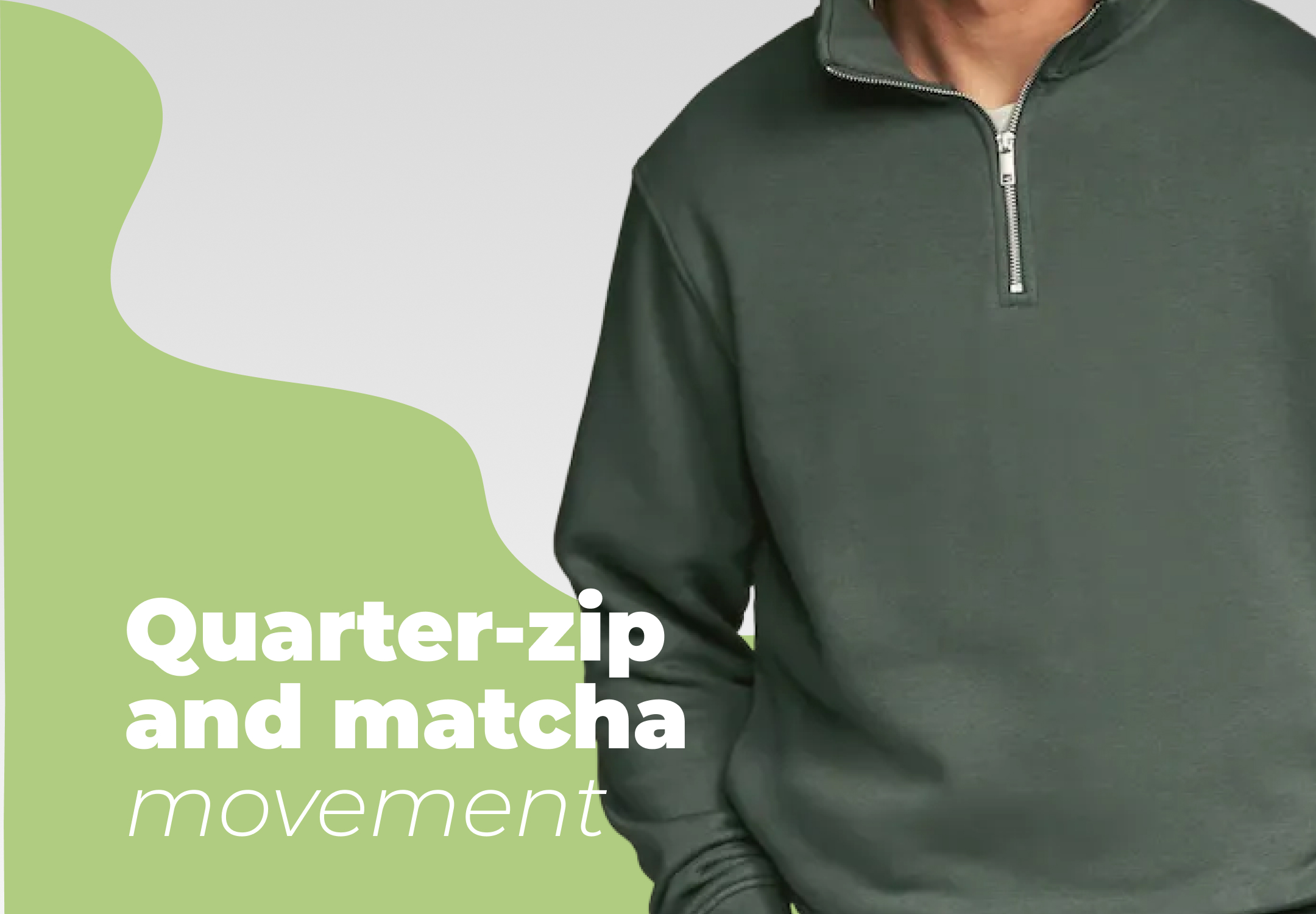
Quarter-zips & matchas: How Gen Z men are gaming social codes on TikTok
November 24, 2025
Quarter-zips and matcha lattes are the new uniform for Gen Z guys who realized that swappi...
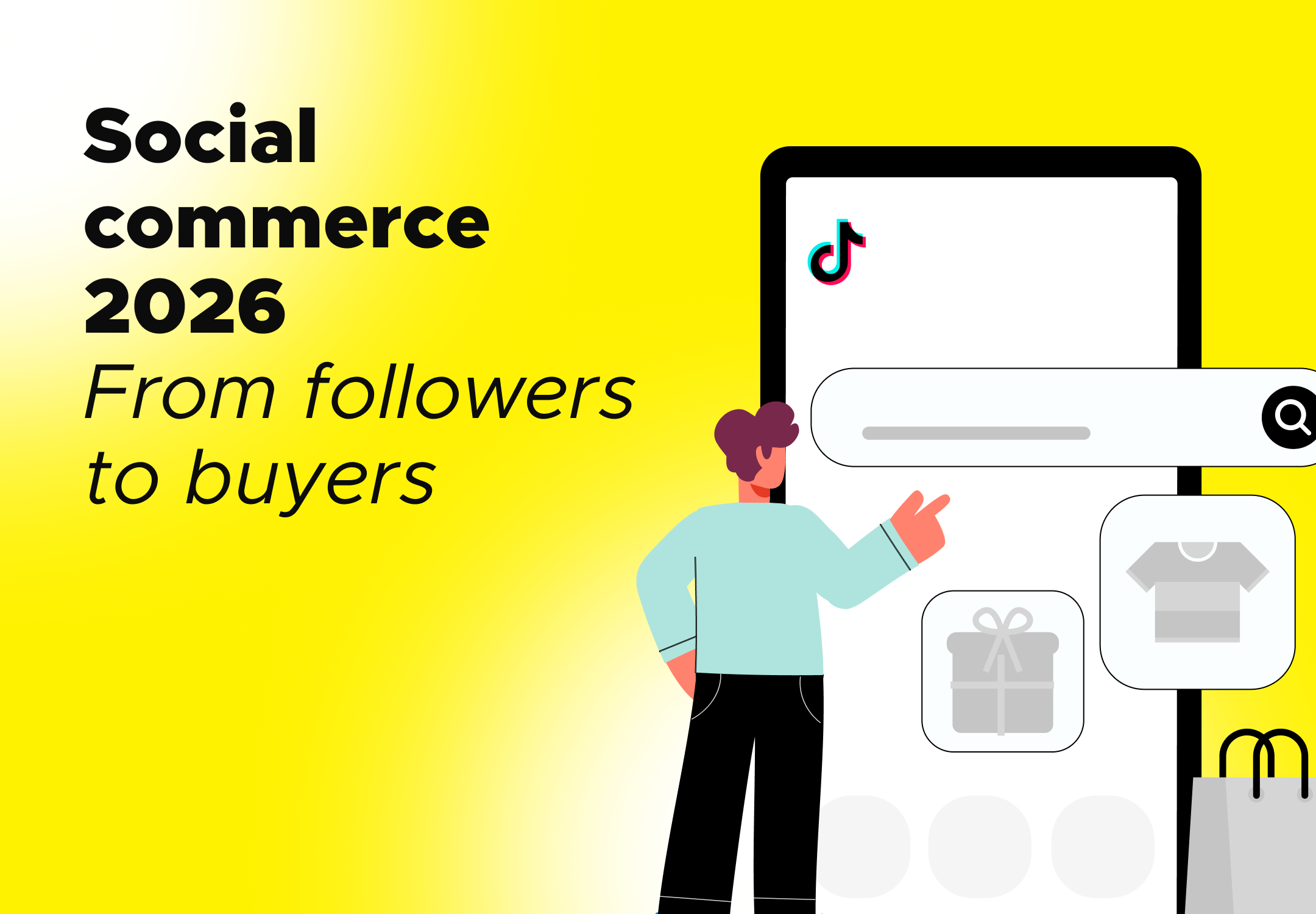
The 2026 social commerce revolution: Turning followers into customers
November 22, 2025
Social media isn't just where people scroll anymore - it's where they shop. In 2026, the b...
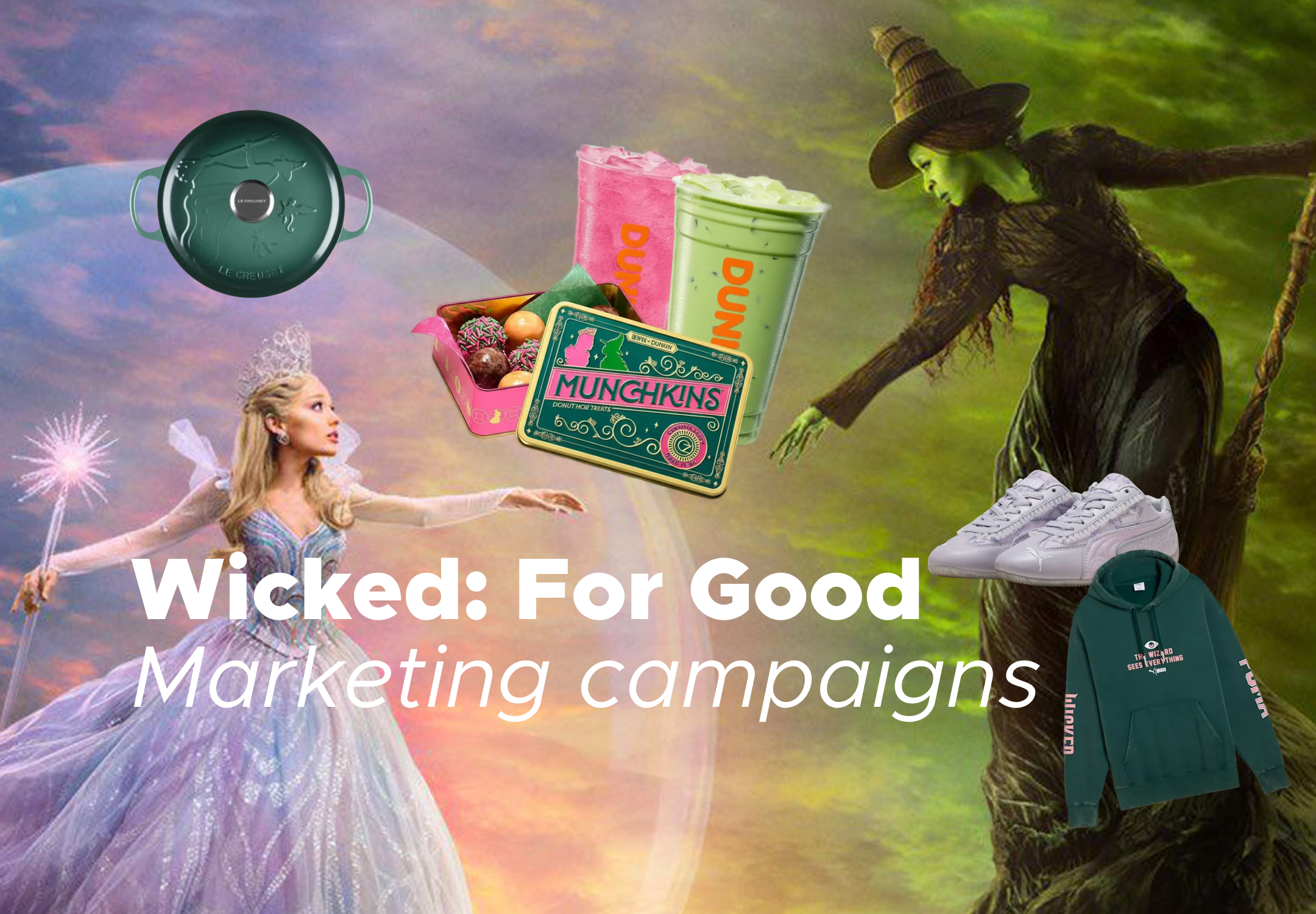
How ‘Wicked: For Good’ transformed brand collaboration
November 20, 2025
Universal Pictures' Wicked franchise didn't just break box office records globally - it re...


